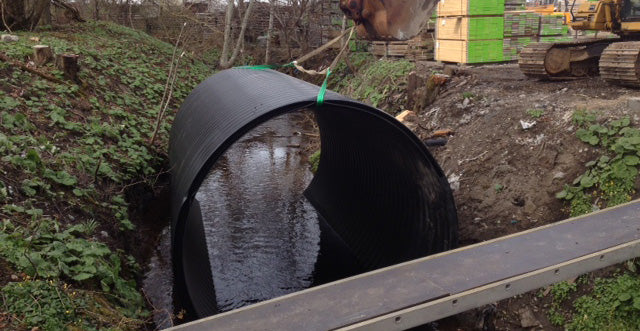Reliable Pad Construction for Your Project Demands
Reliable Pad Construction for Your Project Demands
Blog Article
Culvert Installment Facilitated: Step-by-Step Overview for Success
From picking the appropriate culvert dimension to integrating correct drainage steps, each step in the installment procedure plays an important function in the functionality and long life of the culvert system. Stay tuned to uncover the vital steps and considerations that can make culvert installment a seamless and effective endeavor.
Selecting the Right Culvert Size
Selecting the ideal culvert dimension is essential for making sure reliable water flow and structural stability in culvert setup tasks - Pad Construction. The size of the culvert directly influences the circulation capability of water via the structure. A culvert that is as well tiny can cause flooding and overflow, while one that is also huge might lead to lowered water rate, possibly triggering sediment buildup and clogs
To figure out the best culvert size, variables such as the watershed area, peak flow rates, and hydraulic performance demand to be meticulously thought about. Estimations based on these specifications assist in picking a size that can effectively handle the expected water quantity while minimizing the risk of blockages and architectural failing.
It is necessary to get in touch with engineering standards and standards to make sure that the selected culvert dimension meets the job needs and local policies (Pad Construction). By selecting the best culvert size, job supervisors can maximize water circulation, prevent prospective issues, and boost the total efficiency and long life of the culvert installment
Preparing the Installation Website
Reliable culvert installation demands thorough preparation of the installment website to make sure ideal architectural support and capability. Before commencing the installment process, it is important to get rid of the website of any kind of debris, plants, or blockages that can restrain the culvert's positioning.
In addition, it is crucial to think about factors such as soil structure, groundwater levels, and environmental impacts when preparing the installment site. Performing an extensive website evaluation can aid identify any type of potential obstacles or risks that may influence the culvert's performance. By making the effort to prepare the setup website properly, you can assist ensure a successful culvert setup that meets architectural demands and ensures long-lasting functionality.
Placing the Culvert Correctly

The quality at which the culvert is put is critical for preserving a correct slope for water flow. A progressive slope aids stop pooling and promotes efficient drainage. Furthermore, the culvert ought to be oriented correctly to make sure that the inlet and outlet are in the more tips here appropriate places. This orientation is Continued important for the culvert to work efficiently in handling water circulation.
Backfilling and Condensing the Dirt
Appropriate backfilling and compaction of the soil around the culvert is important to ensure stability and prevent potential issues in the future. Once the culvert is appropriately positioned, the following vital action is to backfill the location around it with suitable product. The backfill product ought to be without rocks, debris, and raw material to prevent damages to the culvert. It is recommended to use granular material such as sand or crushed rock for backfilling, as it gives great water drainage and compaction residential properties.
After positioning the backfill product, it is crucial to compact it in layers of uniform thickness. Making use of a compactor or a mechanical meddle, small the dirt delicately to prevent harming the culvert. Compaction aids in decreasing the chances of settlement and makes sure uniform assistance around the culvert. It is vital to portable the soil uniformly on all sides of the culvert to keep its architectural integrity.
Correct backfilling and compaction not only supply security to the culvert but also assist in stopping soil disintegration and preserving the durability of the culvert system.
Making Certain Proper Drain Assimilation
Integrating more info here reliable water drainage solutions plays a vital duty in the general functionality and longevity of culvert installments. Appropriate drain combination is essential for handling water circulation, stopping disintegration, and making sure the architectural integrity of the culvert system. To attain this, it is vital to create a detailed drainage plan that considers variables such as the quantity of water expected, the topography of the location, and the type of dirt existing.

In addition, integrating functions like disintegration control procedures, such as riprap or greenery, can even more boost the efficiency of the drain system. By carefully preparing and applying these drain remedies, culvert setups can function effectively and endure the test of time.
Conclusion
Finally, correct culvert setup is essential for preserving effective drainage systems. By choosing the ideal culvert dimension, preparing the setup site, positioning the culvert correctly, backfilling and compacting the dirt, and ensuring appropriate drain assimilation, success can be achieved. Following these actions will certainly assist guarantee the long life and efficiency of the culvert, ultimately adding to the general success of the drain system.
Report this page